Abstract
1. In chloralose-anaesthetized artificially ventilated cats, either stimulation of the nasal mucosae with water or electrical stimulation of the superior laryngeal nerve (s.l.n.) resulted in apnoea, as measured from the phrenic nerve activity, and a rise in perfusion pressure of a hindlimb perfused at constant flow. In the absence of changes in venous pressure this vascular response would indicate vasoconstriction in the hindlimb. There was, however, no significant change in either heart rate or arterial blood pressure. 2. Simultaneous stimulation of the nasal mucosae and s.l.n. also resulted in apnoea but with a larger hindlimb vasoconstriction than was obtained with stimulation of only one input. This increased vasoconstriction was not significantly different from the one which in theory could be obtained by summing the two individual responses from stimulation of the nasal mucosae or s.l.n. 3. In cats anaesthetized with chloralose-urethane, stimulation of the nasal mucosae or s.l.n. also evoked an apnoea and hindlimb vasoconstriction. However, in these animals this was accompanied by a bradycardia and small fall in arterial blood pressure. 4. The present results show that whilst stimulation of two parts of the upper respiratory tract evokes qualitatively similar responses in the hindlimb vasculature, simultaneous activation of the two stimuli does not appear to result in facilitation of this hindlimb vasoconstrictor response, simply an addition of those obtained on separate stimulation. The bradycardia evoked in response to upper airway stimulation is dependent on the anaesthetic used and in the present experiments could only be obtained in animals anaesthetized with choralose-urethane.
Full text
PDF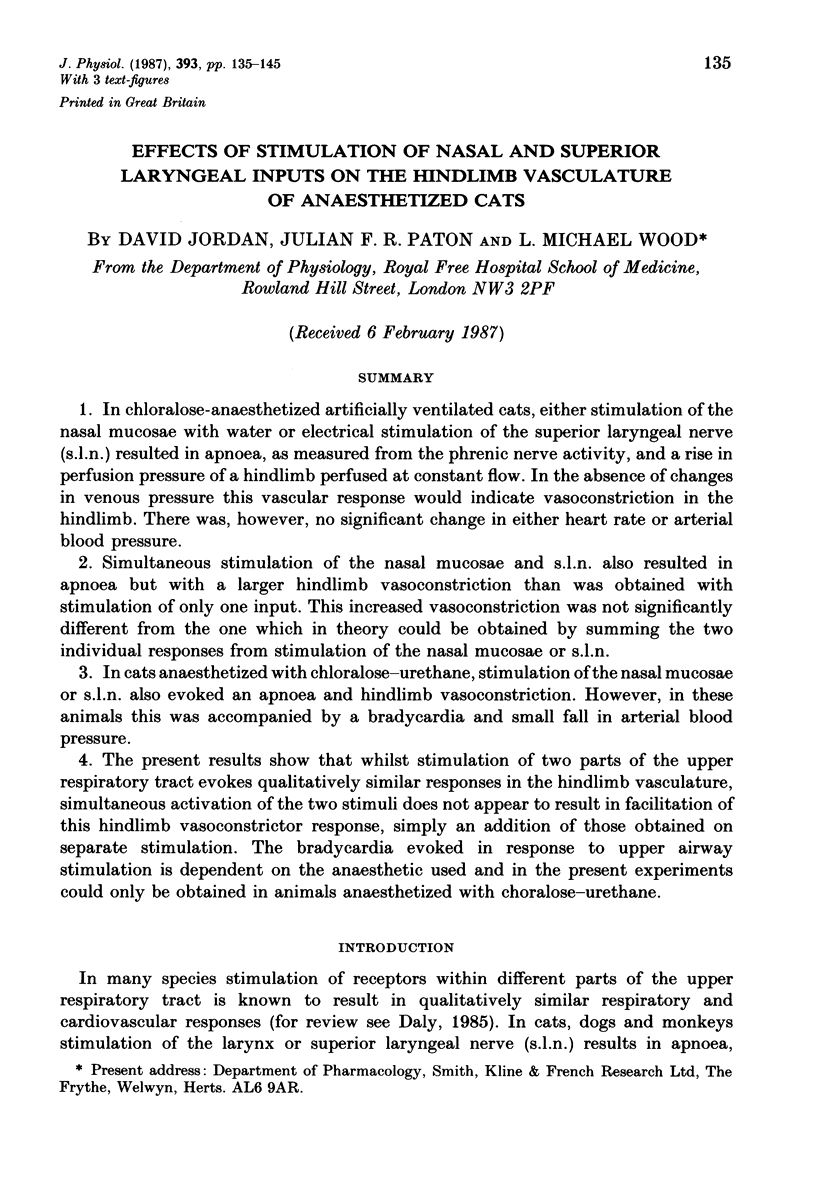
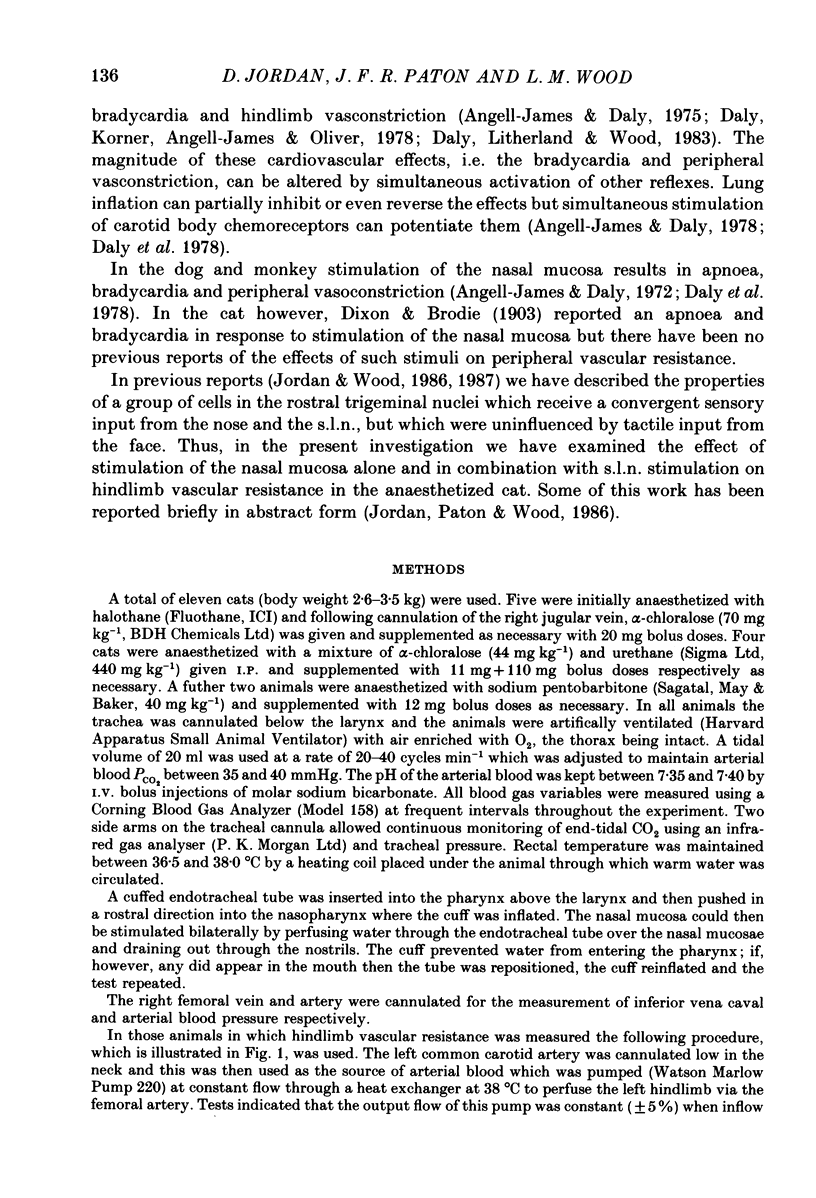
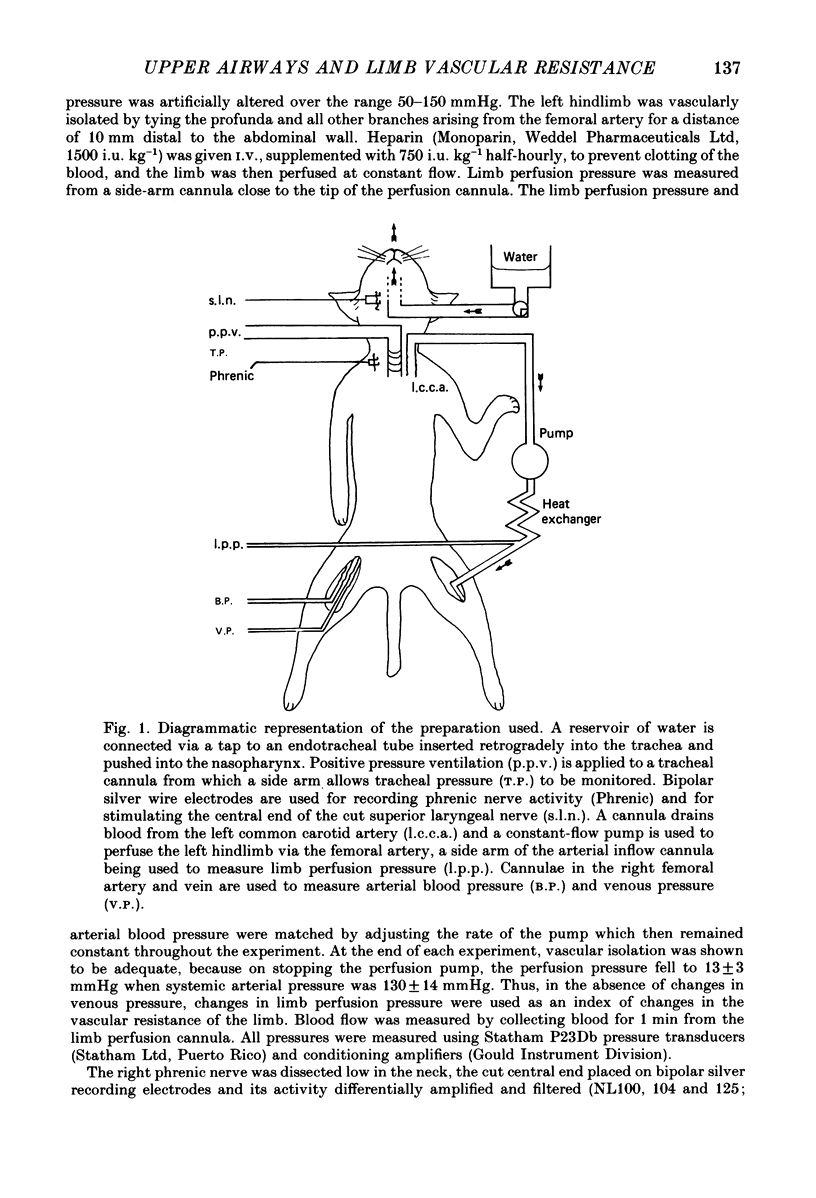
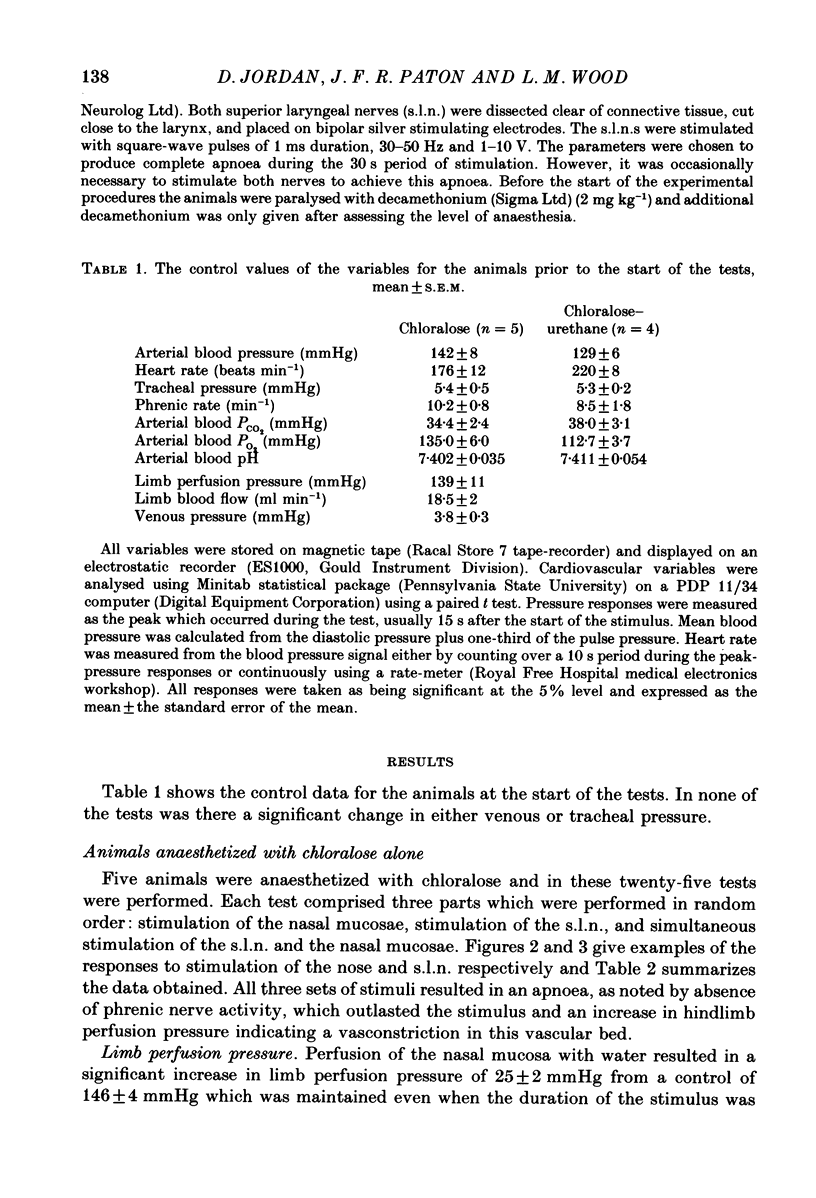
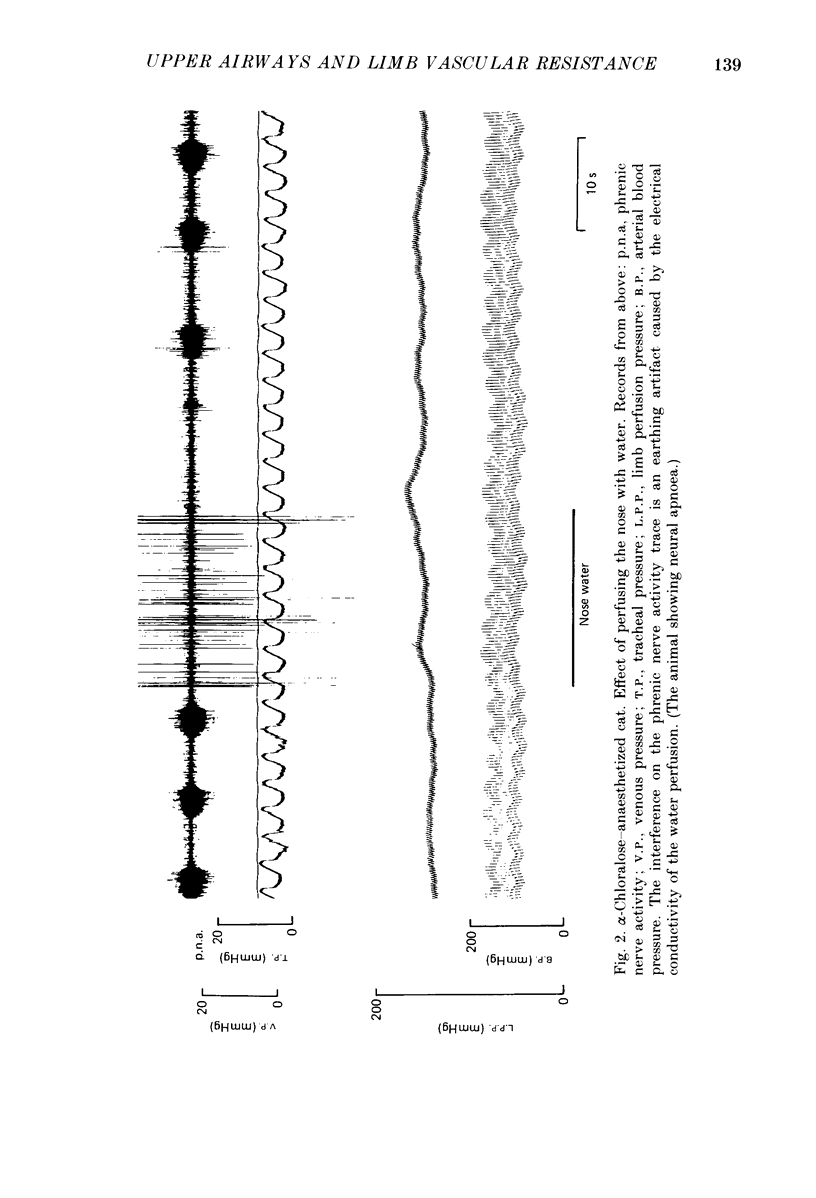
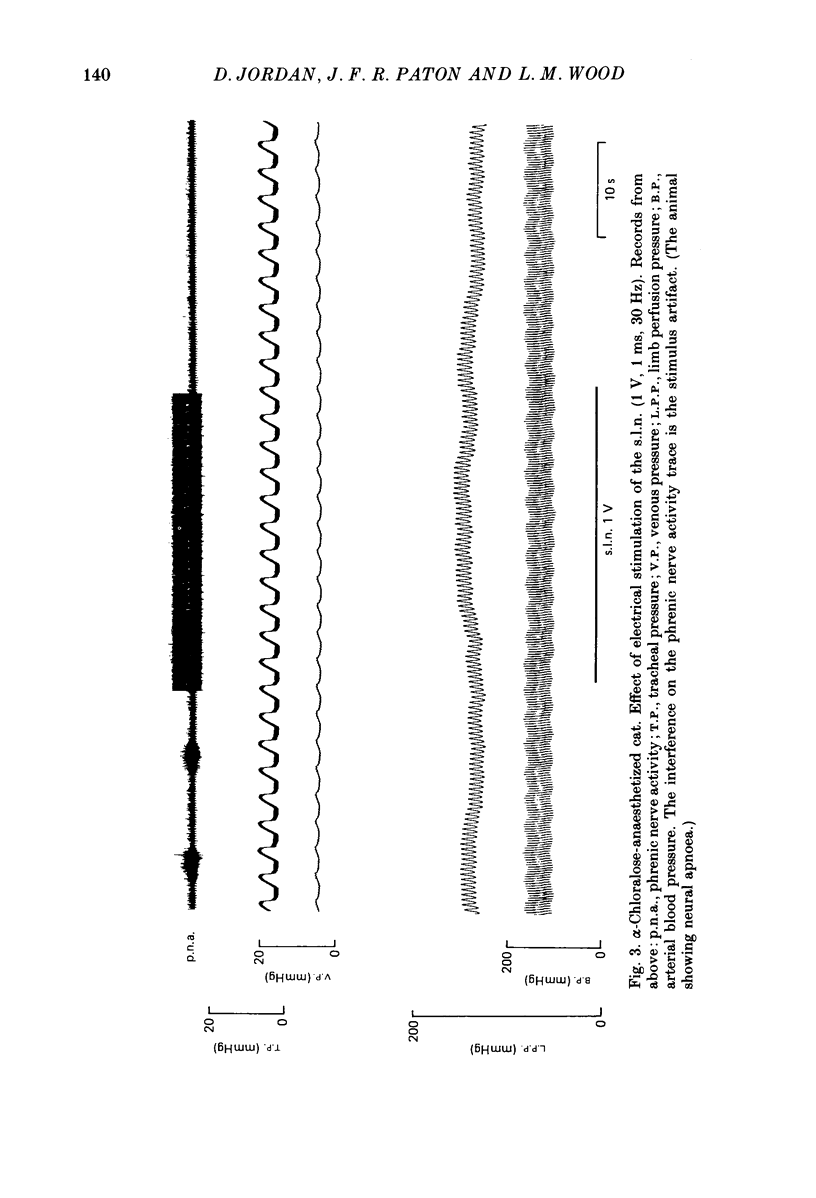
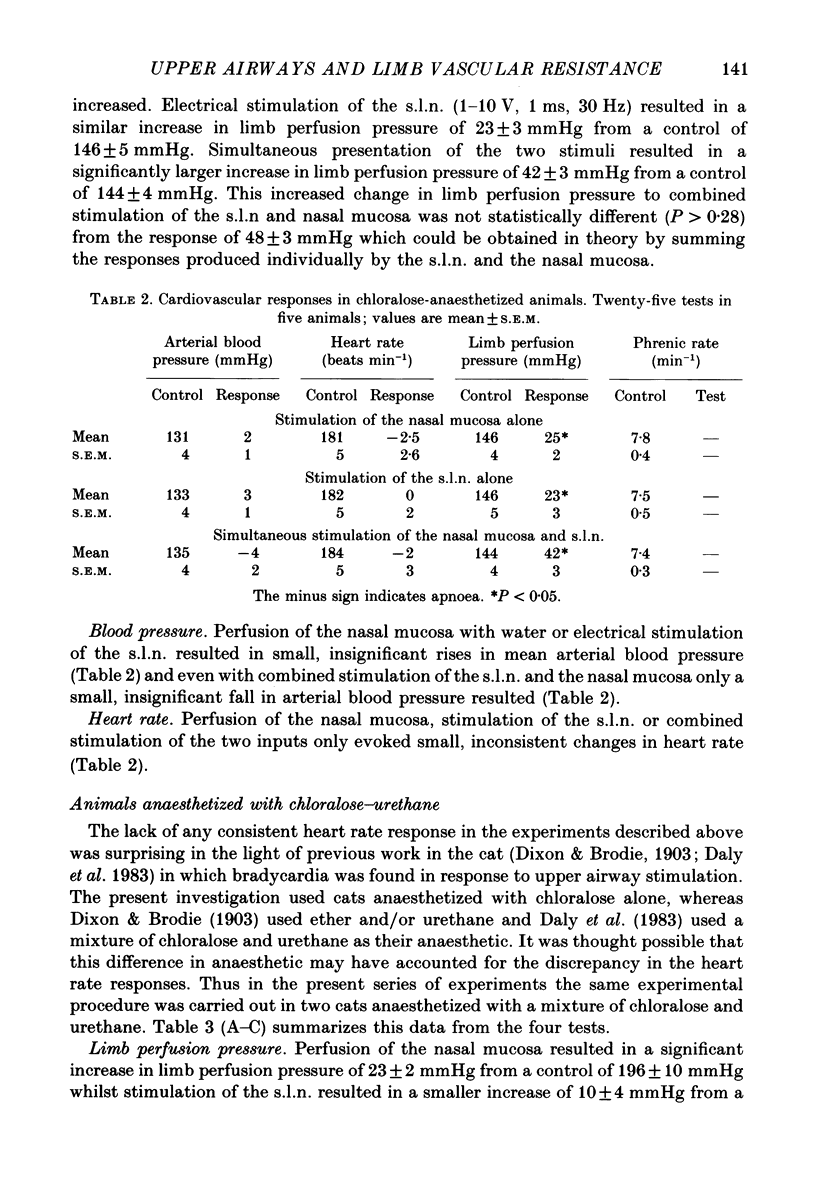
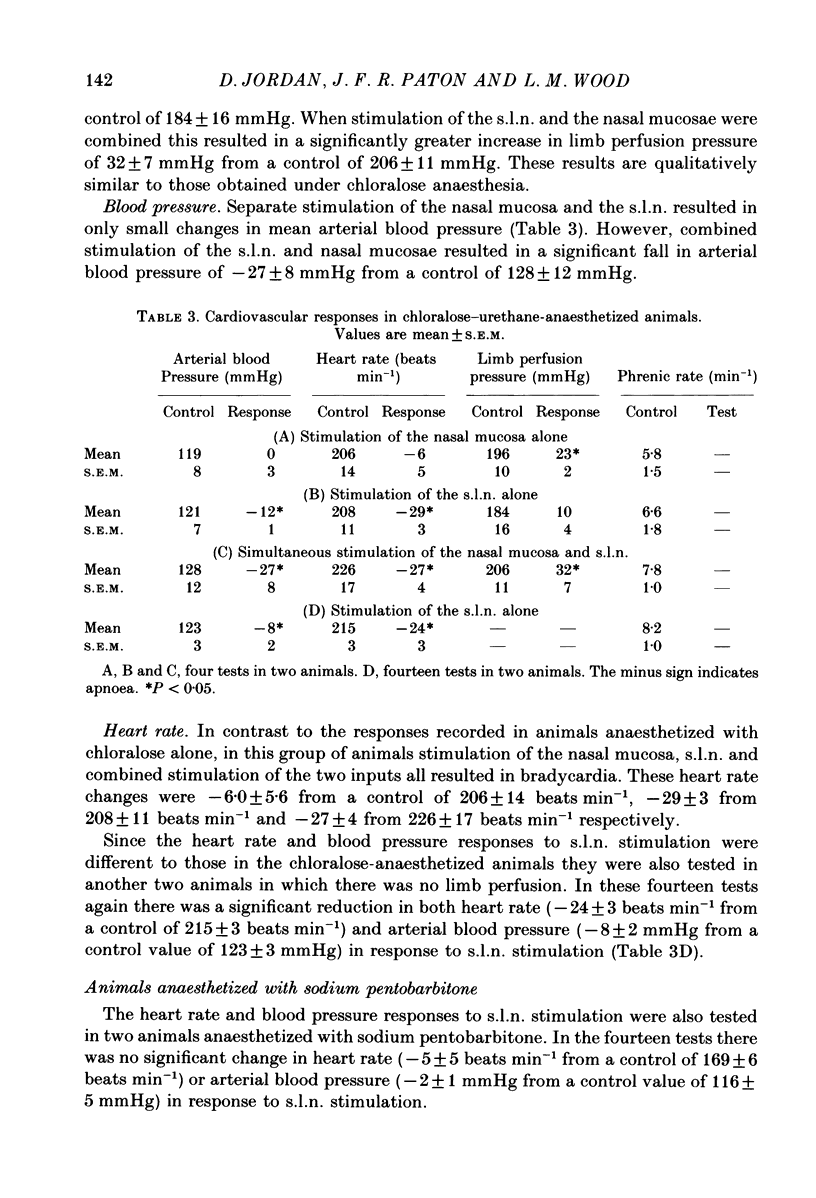
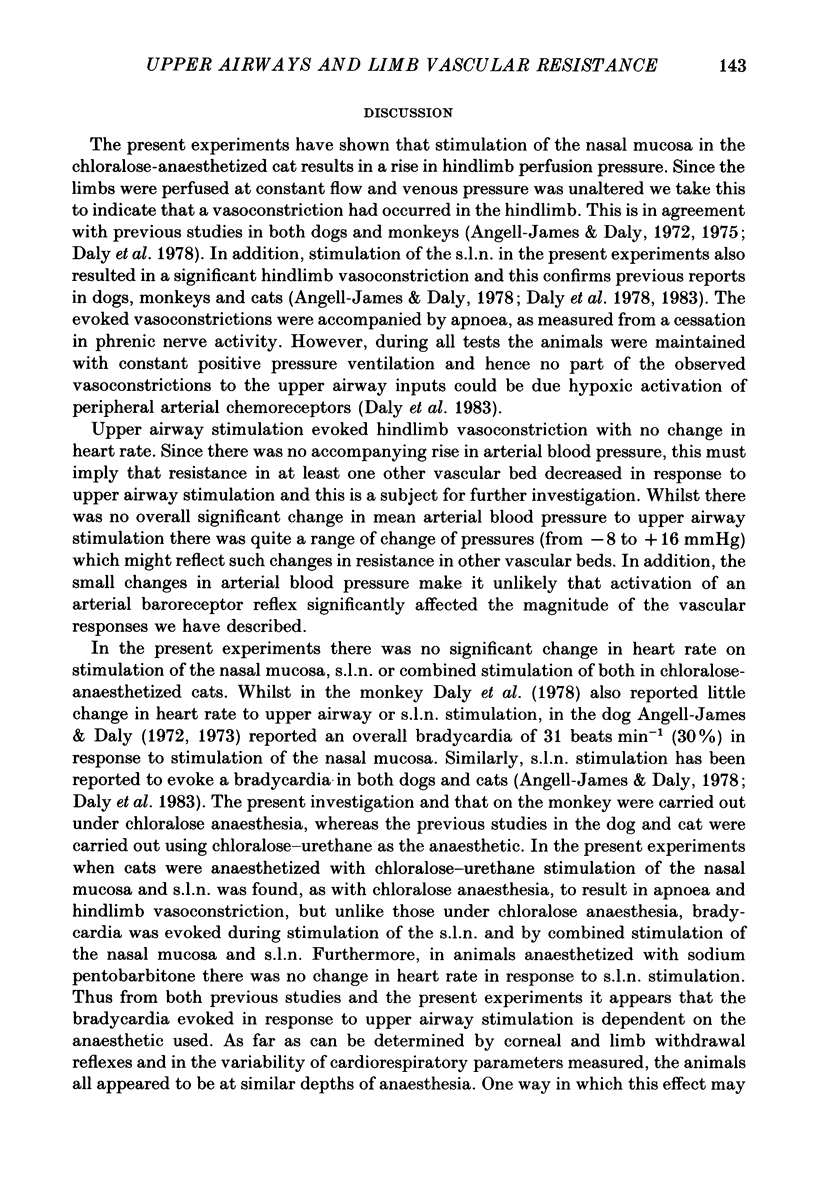
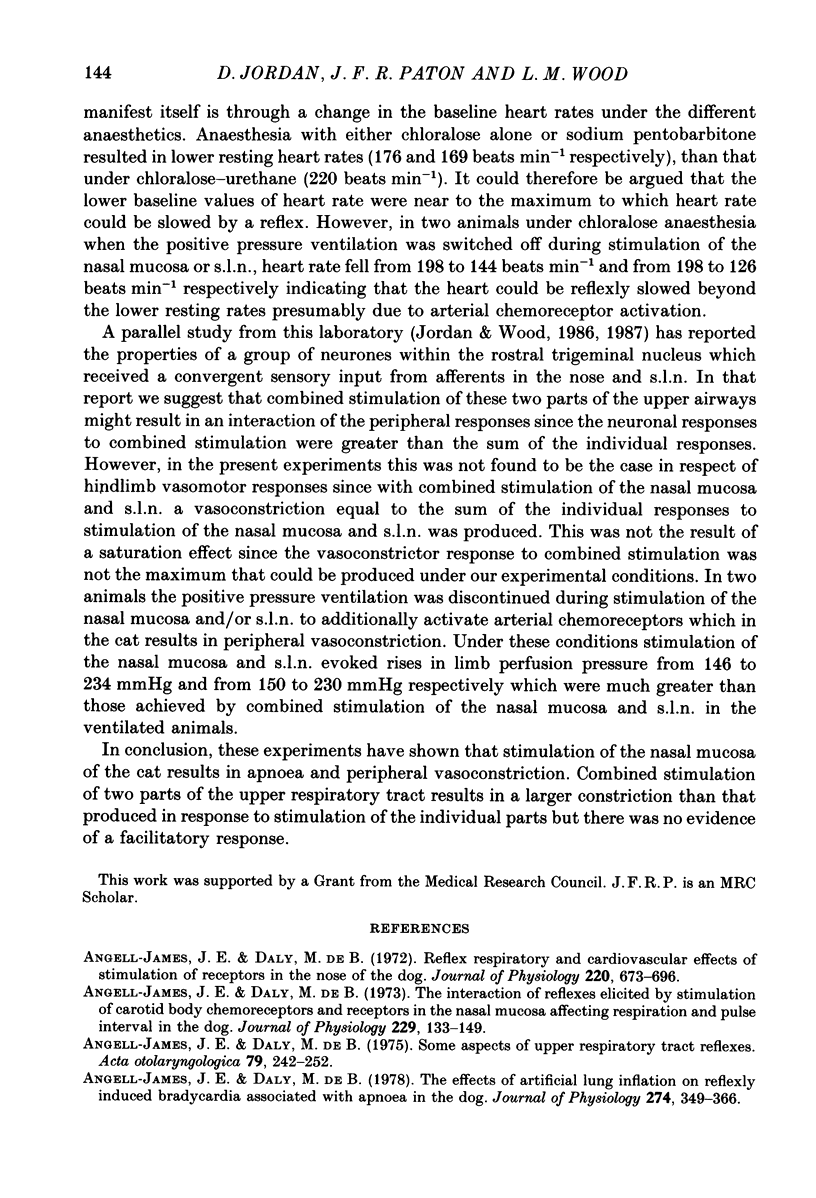
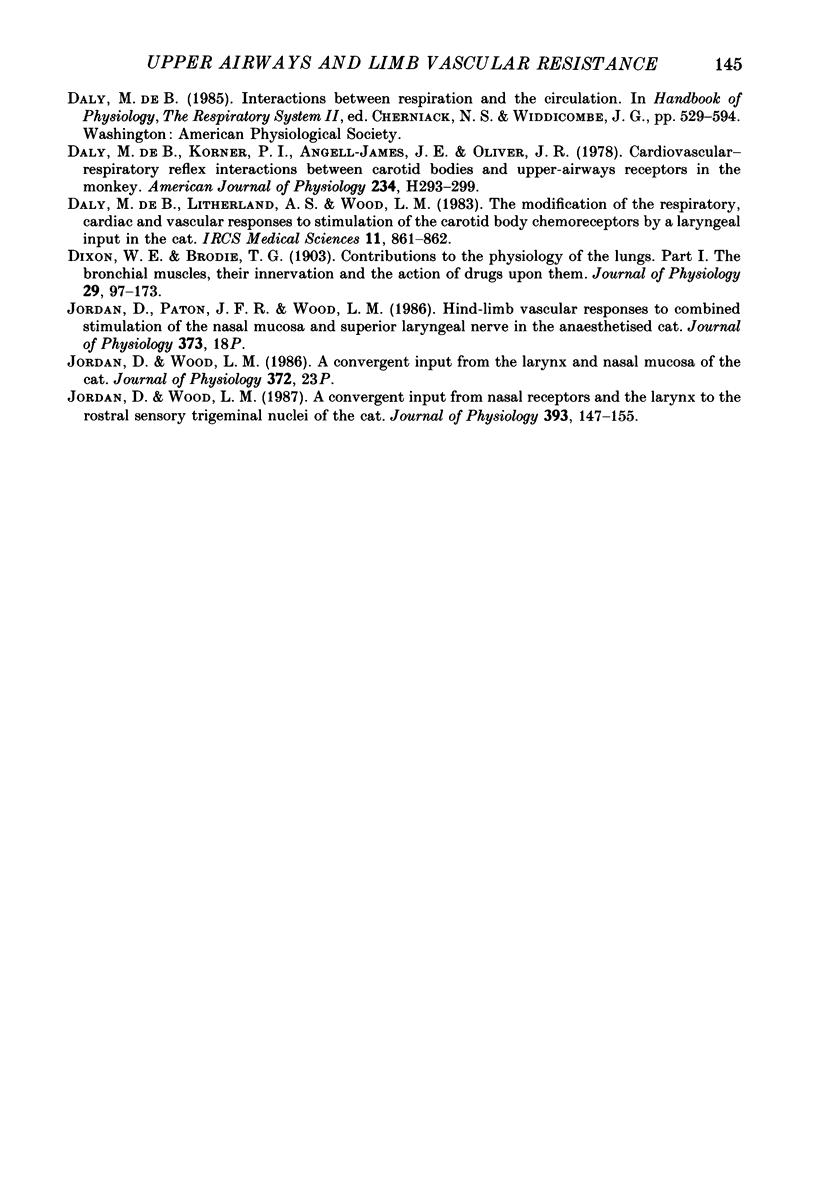
Selected References
These references are in PubMed. This may not be the complete list of references from this article.
- Angell-James J. E., Daly M. B. Some aspects of upper respiratory tract reflexes. Acta Otolaryngol. 1975 Mar-Apr;79(3-4):242–252. doi: 10.3109/00016487509124680. [DOI] [PubMed] [Google Scholar]
- Angell-James J. E., Daly M. D. The effects of artificial lung inflation on reflexly induced bradycardia associated with apnoea in the dog. J Physiol. 1978 Jan;274:349–366. doi: 10.1113/jphysiol.1978.sp012152. [DOI] [PMC free article] [PubMed] [Google Scholar]
- Angell-James J. E., Daly M. de B. The interaction of reflexes elicited by stimulation of carotid body chemoreceptors and receptors in the nasal mucosa affecting respiration and pulse interval in the dog. J Physiol. 1973 Feb;229(1):133–149. doi: 10.1113/jphysiol.1973.sp010131. [DOI] [PMC free article] [PubMed] [Google Scholar]
- Daly M. B., Korner P. I., Angell-James J. E., Oliver J. R. Cardiovascular-respiratory reflex interactions between carotid bodies and upper-airways receptors in the monkey. Am J Physiol. 1978 Mar;234(3):H293–H299. doi: 10.1152/ajpheart.1978.234.3.H293. [DOI] [PubMed] [Google Scholar]
- Dixon W. E. Contributions to the physiology of the lungs: Part I. The bronchial muscles, their innervation, and the action of drugs upon them. J Physiol. 1903 Mar 16;29(2):97–173. doi: 10.1113/jphysiol.1903.sp000947. [DOI] [PMC free article] [PubMed] [Google Scholar]
- James J. E., De Burgh Daly M. Reflex respiratory and cardiovascular effects of stimulation of receptors in the nose of the dog. J Physiol. 1972 Feb;220(3):673–696. doi: 10.1113/jphysiol.1972.sp009729. [DOI] [PMC free article] [PubMed] [Google Scholar]
- Jordan D., Wood L. M. A convergent input from nasal receptors and the larynx to the rostral sensory trigeminal nuclei of the cat. J Physiol. 1987 Dec;393:147–155. doi: 10.1113/jphysiol.1987.sp016816. [DOI] [PMC free article] [PubMed] [Google Scholar]


